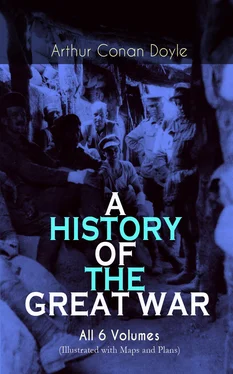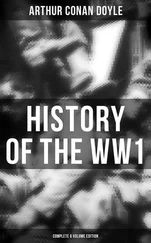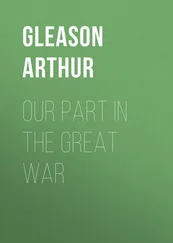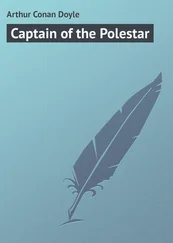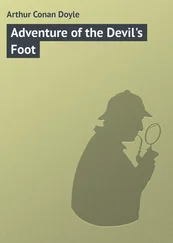
Southern End of British Line
There was now ample evidence that the Germans had received large reinforcements, and that their line was too strong to be forced. The whole object and character of the operations assumed, therefore, a new aspect. The Second and Third Corps had swung round, describing an angle of ninety degrees, with its pivot upon the right at the La Bassée Canal, and by this movement it had succeeded in placing itself upon the flank of the German force which faced the Tenth French Army. But there was now no longer any flank, for the German reinforcements had enabled them to prolong their line and so to turn the action into a frontal attack by the British. Such an attack in modern warfare can only hope for success when carried out by greatly superior numbers, whereas the Germans were now stronger than their assailants, having been joined by one division of the Seventh Corps, a brigade of the Third Corps, and the whole of the Fourteenth Corps, part of which had already been engaged.
Third increased pressure was being felt by the Third Corps on the Lys, as well as by the Second to the south of them; indeed, as only a few miles intervened between the two, they may be regarded as one for these operations. We have seen that, having taken the town of Bailleul, Pulteney’s Corps had established itself across the Lys, and occupied a line from Warneton to Radinghem upon October 18. The latter village had been taken on that day by the 16th Brigade in an action in which the 1st Buffs and 2nd York and Lancasters lost heavily, the latter being ambushed as it pursued the enemy and losing 11 officers and 400 men. Colonel Cobbold fell back upon the village and held it successfully. Pulteney was now strongly attacked, and there was a movement of the Germans on October 20 as if to turn his right and slip in between the two British corps. The action was carried on into the 21st, the enemy still showing considerable energy and strength. The chief German advance during the day was north of La Bassée. It came upon the village of Lorgies, which was the point where the South Lancashires, of McCracken’s 7th Brigade, forming the extreme right of the Third Division, were in touch with the East Surreys and Duke of Cornwall’s of the 14th Brigade, forming the extreme left of the Fifth Division. It is necessary to join one’s flats carefully in the presence of the Germans, for they are sharp critics of such matters. In this instance a sudden attack near Illies drove in a portion of the 2nd South Lancashires. This attack also destroyed the greater part of a company of the 1st Cornwalls in support. An ugly gap was left in the line, but the remainder of the Cornwalls, with the help of a company of the 1st West Kents and the ever-constant artillery, filled it up during the rest of the day, and the 2nd Yorkshire Light Infantry took it over the same night, the Cornishmen retiring with heavy losses but a great deal of compensating glory. The temporary gap in the line exposed the right flank of the 3rd Worcesters, who were next to the South Lancashires. They lost heavily in killed and wounded, their colonel, Stuart, being among the latter, though his injury did not prevent him from remaining in the battle line. Apart from this action at Lorgies, the 19th Brigade (Gordon’s), upon the flank of Pulteney’s Corps, sustained a very heavy attack, being driven back for some distance. It had been ordered to occupy Fromelles, and so close the gap which existed at that time between the left of the Second and the right of the Third Corps, situated respectively at Aubers and Radinghem. The chief fighting occurred at the village of Le Maisnil, close to Fromelles. This village was occupied by the 2nd Argylls and half the 1st Middlesex, but they were driven out by a severe shell-fire followed by an infantry advance. The brigade fell back in good order, the regiments engaged having lost about 300 men. They took up a position on the right of the 16th Infantry Brigade at La Boutillerie, and there they remained until November 17, one severe attack falling upon them on October 29, which is described under that date.
On the morning of October 22 the Germans, still very numerous and full of fight, made a determined attack upon the Fifth Division, occupying the village of Violaines, close to La Bassée. The village was held by the 1st Cheshires, who, for the second time in this campaign, found themselves in a terribly difficult position. It is typical of the insolent high spirits of the men, in spite of all that they had endured, that upon the Germans charging forward with a war-cry which resembled, “Yip, Yip, Yip!” the British infantry joined in with “I-addy-ti-ay!”—the whole forming the chorus of a once popular Gaiety song. The Cheshires inflicted heavy losses upon the stormers with rifle-fire, but were at last driven out, involving in their retirement the 1st Dorsets, who had left their own trenches in order to help them. Both regiments, but especially the Cheshires, had grievous losses, in casualties and prisoners. On advancing in pursuit the Germans were strongly counter-attacked by the 2nd Manchesters and the 1st Cornwalls, supported by the 3rd Worcesters, who, by their steady fire, brought them to a standstill, but were unable to recover the ground that had been lost, though the Cornwalls, who had been fighting with hardly a pause for forty-eight hours, succeeded in capturing one of their machine-guns. In the night the British withdrew their line in accordance with the general rearrangement to be described. Some rearguard stragglers at break of day had the amusing experience of seeing the Germans making a valiant and very noisy attack upon the abandoned and empty trenches.
On this date, October 22, not only had Smith-Dorrien experienced this hold-up upon his right flank, but his left flank had become more vulnerable, because the French had been heavily attacked at Fromelles, and had been driven out of that village. An equilibrium had been established between attack and defence, and the position of the Aisne was beginning to appear once again upon the edge of Flanders. General Smith-Dorrien, feeling that any substantial advance was no longer to be hoped for under the existing conditions, marked down and occupied a strong defensive position, from Givenchy on the south to Fauquissart on the north. This involved a retirement of the whole corps during the night for a distance of from one to two miles, but it gave a connected position with a clear field of fire. At the same time the general situation was greatly strengthened by the arrival at the front of the Lahore Division of the Indian Army under General Watkis. These fine troops were placed in reserve behind the Second Corps in the neighbourhood of Locon.
It is well to remember at this point what Smith-Dorrien’s troops had already endured during the two months that the campaign had lasted. Taking the strength of the corps at 37,000 men, they had lost, roughly, 10,000 men in August, 10,000 in September, and 5000 up to date in these actions of October. It is certain that far less than 50 per cent of the original officers and men were still with the Colours, and drafts can never fully restore the unity and spirit of a homogeneous regiment, where every man knows his company leaders and his platoon. In addition to this they had now fought night and day for nearly a fortnight, with broken and insufficient sleep, laying down their rifles to pick up their spades, and then once again exchanging spade for rifle, while soaked to the skin with incessant fogs and rain, and exposed to that most harassing form of fighting, where every clump and hedgerow covers an enemy. They were so exhausted that they could hardly be woken up to fight. To say that they were now nearing the end of their strength and badly in need of a rest is but to say that they were mortal men and had reached the physical limits that mortality must impose.
Читать дальше
